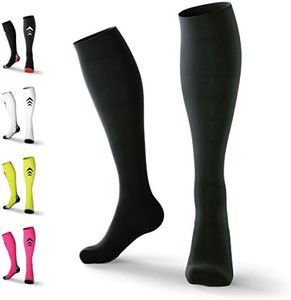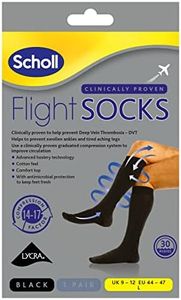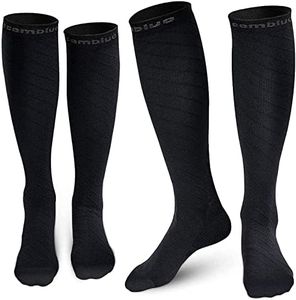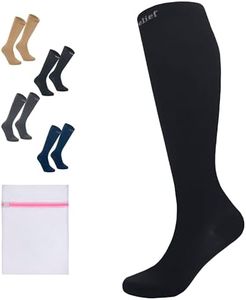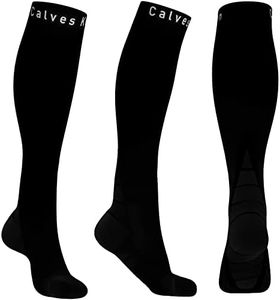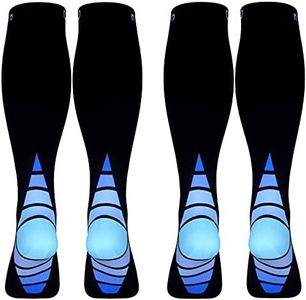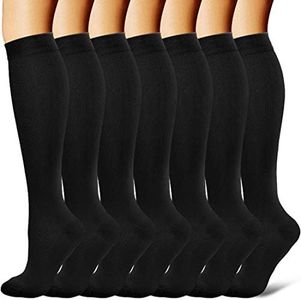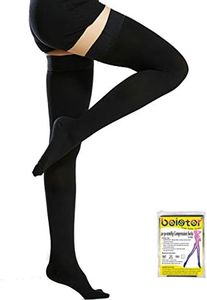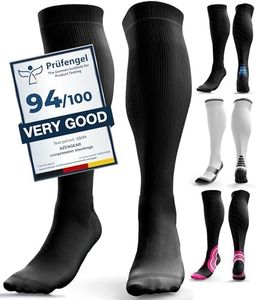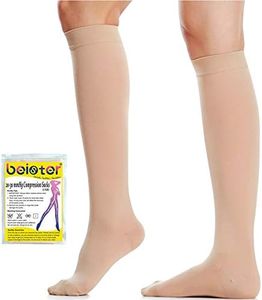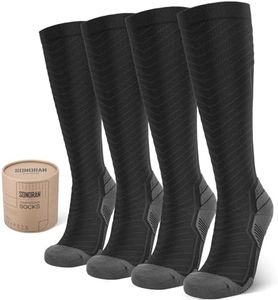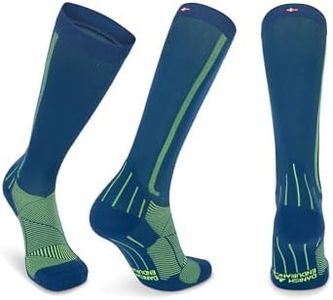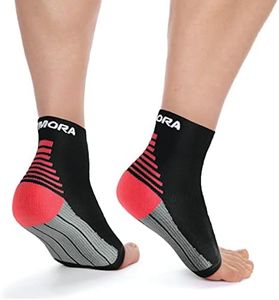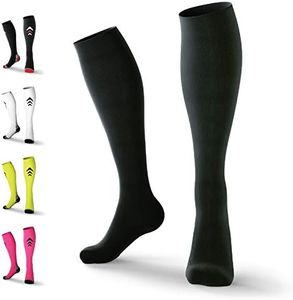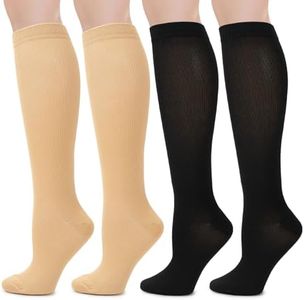We Use CookiesWe use cookies to enhance the security, performance,
functionality and for analytical and promotional activities. By continuing to browse this site you
are agreeing to our privacy policy
10 Best Compression Socks
From leading brands and best sellers available on the web.Recommended lists
Buying Guide for the Best Compression Socks
Compression socks are designed to improve blood flow and reduce swelling in the legs. They are commonly used by people who stand or sit for long periods, athletes, and those with certain medical conditions. Choosing the right pair of compression socks involves understanding various specifications to ensure they meet your needs and provide the desired benefits.Compression LevelCompression level refers to the amount of pressure the socks apply to your legs, measured in millimeters of mercury (mmHg). This spec is crucial because it determines how effective the socks will be in improving circulation and reducing swelling. Compression levels are typically divided into mild (8-15 mmHg), moderate (15-20 mmHg), firm (20-30 mmHg), and extra firm (30-40 mmHg). Mild compression is suitable for everyday wear and mild swelling, moderate for moderate swelling and varicose veins, firm for more severe conditions like deep vein thrombosis, and extra firm for serious medical conditions. Choose a compression level based on your specific needs and any recommendations from a healthcare provider.
MaterialThe material of compression socks affects comfort, durability, and breathability. Common materials include nylon, spandex, and cotton blends. Nylon and spandex provide elasticity and durability, making them ideal for active use and long-term wear. Cotton blends offer more comfort and breathability, suitable for everyday wear and sensitive skin. Consider your lifestyle and any skin sensitivities when choosing the material of your compression socks.
Size and FitSize and fit are essential for the effectiveness of compression socks. They should fit snugly without being too tight or too loose. Sizes are usually based on shoe size, calf circumference, and sometimes ankle circumference. Proper fit ensures optimal compression and comfort. Measure your legs according to the manufacturer's guidelines and choose a size that matches your measurements. If you're between sizes, consider the level of compression and your comfort preferences.
LengthCompression socks come in various lengths, including knee-high, thigh-high, and full-length. The length you choose depends on where you need the most support. Knee-high socks are suitable for general use and lower leg issues, thigh-high for upper leg conditions, and full-length for comprehensive support. Consider your specific needs and any recommendations from a healthcare provider when choosing the length of your compression socks.
Design and StyleDesign and style may seem less important, but they can affect your willingness to wear the socks regularly. Compression socks come in various colors, patterns, and styles, from plain to fashionable. Choose a design that you find appealing and that fits your lifestyle, whether you need them for work, sports, or casual wear. The right design can make wearing compression socks more enjoyable and consistent.
